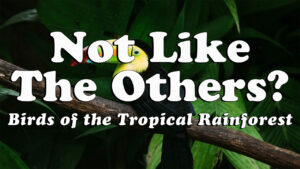Earth Science

Create a new creature based on the adaptations of existing creatures from the same biome.

Students will determine which type of natural disaster is not like the others.

Your students will create a new flower, designed to attract a specific pollinator.

Sure, students might know the difference between a producer and a consumer… but have they considered how they feel about each other? What, in a producer’s opinion, are the pros and cons of a consumer?

The Nile, the Tigris, the Euphrates, the Seine, the Thames, and now… your river!

Which animal has the most interesting, most valuable, or strangest adaptations?

Want to move beyond memorizing the characteristics of biomes? In this lesson, students work through a Tournament of Biomes, explaining which biome wins in each round (based on criteria you choose). In the end, they crown a 👑 Champion Biome!

What would an igneous rock be like? Would it get along with a sedimentary rock? Could they handle the hot personality of a metamorphic rock?

Students will determine which creature of the tundra is not like the others.

Who will win in a tournament of eight plants with Interesting adaptations!?

A mysterious image. Slowly reveal it. Let your students wonder!

Let’s look at living vs non-living things.

Which resource is more renewable? And which is easier to find?

Can your class spot the vertebrates vs invertebrates?

Students will determine which type of penguin is not like the others.

Some of these animals are nocturnal and some are diurnal.

Eight types of precipitation battle it out in this tournament.

What if a capybara and a kangaroo rat switched homes? Would their adaptations be helpful at all?

Who will win the tournament of Natural Disasters!?

A mysterious image. Slowly reveal it. Let your students wonder!

A mysterious image. Slowly reveal it. Let your students wonder!

Which of these types of volcanoes is not like the others?

A mysterious image. Slowly reveal it. Let your students wonder!

Is it an island or an archipelago?

A mysterious image. Slowly reveal it. Let your students wonder!

A mysterious image. Slowly reveal it. Let your students wonder!

Which of these rocks is not like the others?

A mysterious image. Slowly reveal it. Let your students wonder!

Which of these four birds is not like the others?

Is it a reptile or an amphibian?

Students will determine which snake of the rainforest is not like the others.

Which of these rainforests is not like the others?

Which of these deserts is not like the others?

We’re looking at the arctic vs the antarctic.

A mysterious image. Slowly reveal it. Let your students wonder!

Students will determine which type of ant is not like the others.

Students will determine which flower is not like the others.

A mysterious image. Slowly reveal it. Let your students wonder!

A mysterious image. Slowly reveal it. Let your students wonder!

A mysterious image. Slowly reveal it. Let your students wonder!

A mysterious image. Slowly reveal it. Let your students wonder!

Let’s look at saltwater vs freshwater organisms.

Students will determine which desert bird is not like the others.

A mysterious image. Slowly reveal it. Let your students wonder!

A mysterious image. Slowly reveal it. Let your students wonder!

Let’s look at deciduous vs coniferous trees.

A mysterious image. Slowly reveal it. Let your students wonder!

A mysterious image. Slowly reveal it. Let your students wonder!

A mysterious image. Slowly reveal it. Let your students wonder!

A mysterious image. Slowly reveal it. Let your students wonder!

Students will determine which cephalopod is not like the others.

Students will determine which river is not like the others.

A mysterious image. Slowly reveal it. Let your students wonder!

A mysterious image. Slowly reveal it. Let your students wonder!
